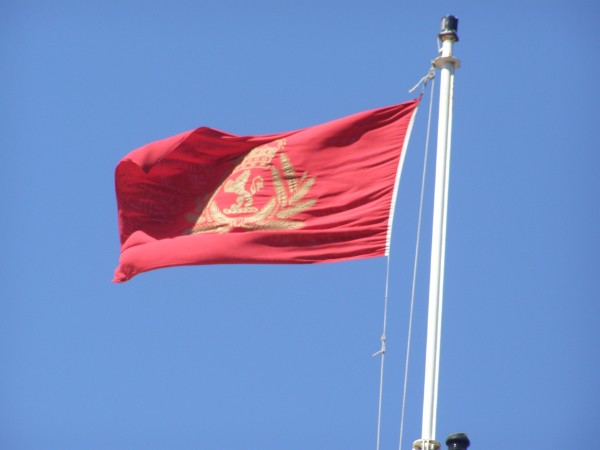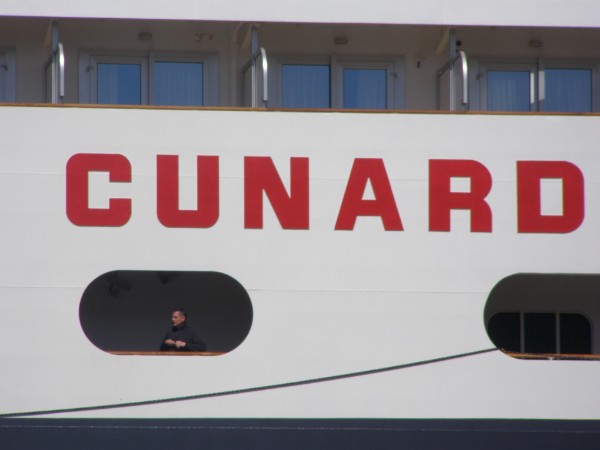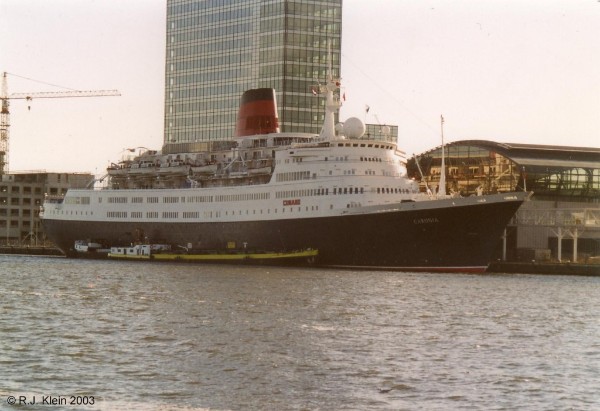Cunard Line
Without a doubt one of the most famous names in passenger shipping, Cunard Line has seen every aspect of ocean travel since their origins as the British & North American Steam Packet Company. With a name like that, it is not hard to imagine that the company became known as the Cunard Line, named after the man who started it all, the Halifax born Samuel Cunard, the son of a German immigrant. At the 15th of may 1840, Cunards first steamship set sail from Liverpool to Halifax and this was not Britannia but Unicorn. This ship was meant for the feederservice between Halifax and Boston and Quebec, so she set sail before the Britannia, that is normally seen as the first Cunard ship. Britannia was of course the first steamship to operate a regularly scedule of Transatlantic voyages and with Queen Mary 2 being the only and last one now, it can be said that Cunard Line can only be named as the grandest of all Atlantic lines. Before starting off with steamships, Cunard had a great number of sailingships in ownership. In 1838, he and his brothers owned at least 40 of them.
One of the most well-known flags in the cruising world is of course the Golden Lion. It was introduced in 1840 to honour the builders of the First Cunard ships, that were the Scots, and also to thank the first people who made it possible for the company to gain capital, also Scots. So thats why Cunard added this Scottish symbol to his flag and it still is the same as in the early beginnings. This flag is the one that is flying on the companies newest ship, the Queen Elizabeth.

The company is often referred to for their great record that is about never losing a single passengers life at sea through accident, of course not counting the waryears. In the first worldwar, they lost one of their greatest ships, the Lusitania in 1915 and in the second worldwar, the Lancastria in june 1940. This ship was bombed and some 4400 people lost their lives, one of the biggest maritime tragedies in history. But the companies record isn't actually true, because they once had a severe accident aboard their 1893-built liner Campania. At the 7th october of 1905, a huge wave crashed suddenly over the decks of the ship, especially the steerage deck. Here, five passengers were washed into the sea and 29 others were seriously injured. The five people washed overboard were never found. With his story, a great story of heroism comes too, because stewardess Cotes managed to rescue two children who were being washed from the deck to the broken railing. They survived all three.
But Cunard Line is mostly known for their great ships, storybook history and unparalelled grandeur. Ships like Queen Mary, Mauretania, Aquitania, Queen Elizabeth and, of our age, Queen Elizabeth 2 and Queen Mary 2. Also the ship that brought the survivors of the Titanic tragedy to New York, the greatly loved Carpathia.
But also the Cunard Line had its bad years and in the 1960's, the greatest ships in the world were losing money every time they sailed the Atlantic. It was also in these years that they experimented with airtrvel, together with BOAC they operated Cunard Eagle Airways. It was their objective to ferry passengers and goods across the Atlantic, when ships would be gone, airplanes could do the trick too. Actually, already in the companies statues from 1935 onwards, airtravel was optioned as a possibility to carry passengers. Next to Cunard Line, also P&O, Holland America Line and HAPAG-Lloyd experimented with airtravels. But this venture was shortlived and in the beginning of the 1970's they concentrated on cruising, with newly purpose built cruiseliners. Next to these, Queen Elizabeth 2 was still sailing Transatlantic voyages untill 2004, when Queen Mary 2 took over. I guess nobody in the end of the 1960's truly believed that after the year 2000, the grandest oceanliner ever built would be sailing for Cunard.
Since Queen Elizabeth 2, Cunard added the name of the company to the ships exteriours. This was done to QE2, because she wasn't built with the traditional Cunard stack so the ship was maybe not immidiately recognizable as a Cunarder. This name below is the one that is fitted to the 2010-built Queen Elizabeth.

Although succesfull, Cunard Line lost much of their grandeur in the cruising age. They sailed with numerous different names on their ships, numerous different funnelcolours and there did not seem to be a real strategy anymore. This all ended when Cunard Line was bought by Kvaerner in the middle of the 1990's and the fleet was quickly reduced to two ships with the looks and style of traditional oceanliners. These were, of course, Queen Elizabeth 2 and Vistafjord. Kvaerner was the line's owner for a very short time, before they sold Cunard to Carnival Cruise Lines, the most succesfull cruiseline in the world. Not every passengership lover is a Carnival fan, but we can say that Carnival has a great number of classic brands in their ownership and is carefully building up these fleets with their histories in mind. Under Carnival ownership, these old lines were reflagged to their countries of origin, decorated by people from their original homegrounds and able to use traditional names and livery. But most important, the companynames are still in existence, while they all have had very tough times before.
Cunard really returned to the forefront of cruising
The traditional Cunard liner names normally ended in '-ia'. Between 1999 and 2004, this tradition briefly returned in the Caronia.

Several ships that have sailed for Cunard Line but are placed under different operators on castlesoftheseas are listed below
Cunard Princess (1976-1995) is listed under MSC Cruises as Rhapsody
Sagafjord (1983-1997) is listed under Saga Cruises as Saga Rose
Vistafjord (1983-1999) is listed under Saga Cruises as Saga Ruby
Royal Viking Sun (1994-1999) is listed under Holland America Line as Prinsendam
Caronia (1999-2004) is listed under Saga Cruises as Saga Ruby

